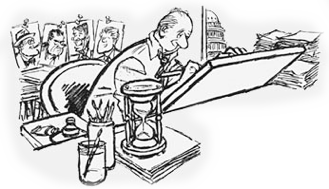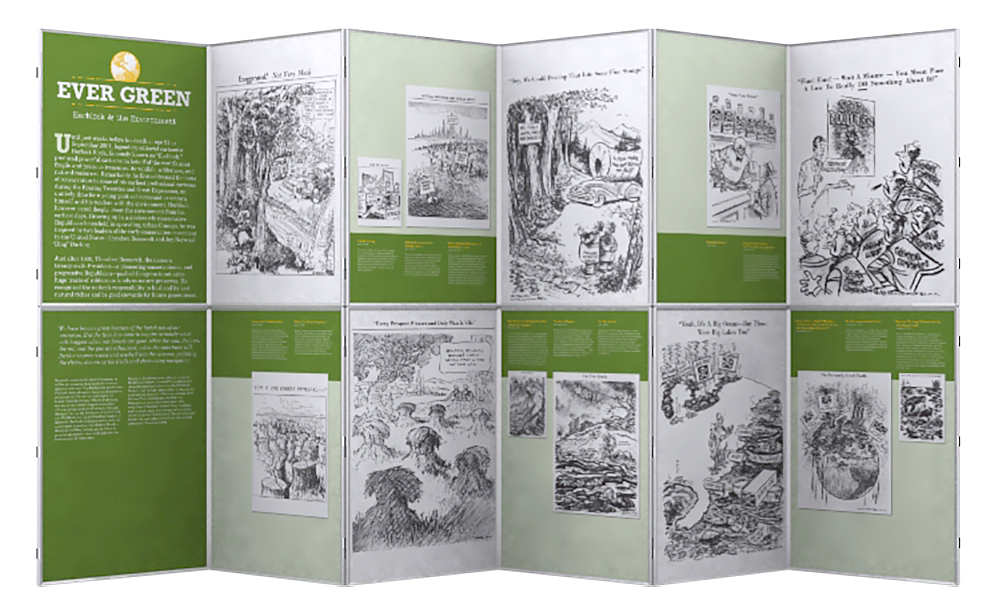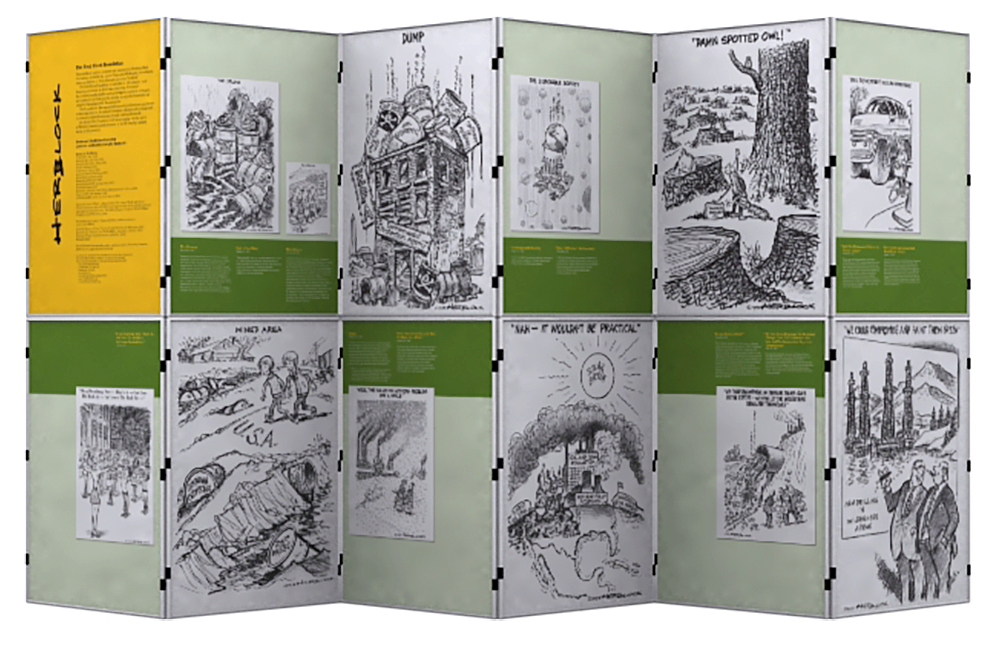Ever Green
Herblock cared deeply about the environment. His work on issues about wildlife, wilderness and natural resources are as relevant today, as they were in the past. Many of his cartoons on the world’s most fragile and precious treasures, were produced shortly before his death at age 91 in September 2001.
Request Exhibition
A Teacher's Guide
Herblock was inspired to produce cartoons on the environment by two early leaders of the conservation movement: Theodore Roosevelt and Jay Norwood “Ding Darling. Even as early as the Twenties and the Great Depression, Herblock was producing work that brought forth issues regarding wildlife, wilderness and natural resources. These same issues are relevant in today’s world and address environmental issues that we all must face in our everyday lives.
1. Choose one of Herblock’s cartoons on the Environment and have the students “translate” the image and captions in terms as they see and understand the meaning. Have them review and discuss why they see, what they see in the cartoon.
2. Organize the students into groups dealing with a particular environmental concern that Herblock has depicted and have them discuss what they would do or what should be done to “solve” the issue. They can write, draw or present their ideas verbally.
3. Have the students draw, photograph or write about the environmental issue that is most important to them or affects them the most. Have them interpret the issue in their own terms.
4. Organize the students into an environmental task force for the school, local park, or school grounds. Have them write or draw about what they see and what they can do to help the environment in their own way.
5. Have the students make “art” or something functional out of found objects-recyclable items-to show them how things that are thrown away can be reused.
6. Visit a local recycling center or have someone come by the classroom who can discuss the recycling process with them. Have them discuss ways they can recycle in the classroom and at home.
 Herb Block is among the world’s best known and most admired political cartoonists. Born on October 13, 1909, the native Chicagoan spent his 72-year career fighting against abuses of the powerful.
Herb Block is among the world’s best known and most admired political cartoonists. Born on October 13, 1909, the native Chicagoan spent his 72-year career fighting against abuses of the powerful.

























